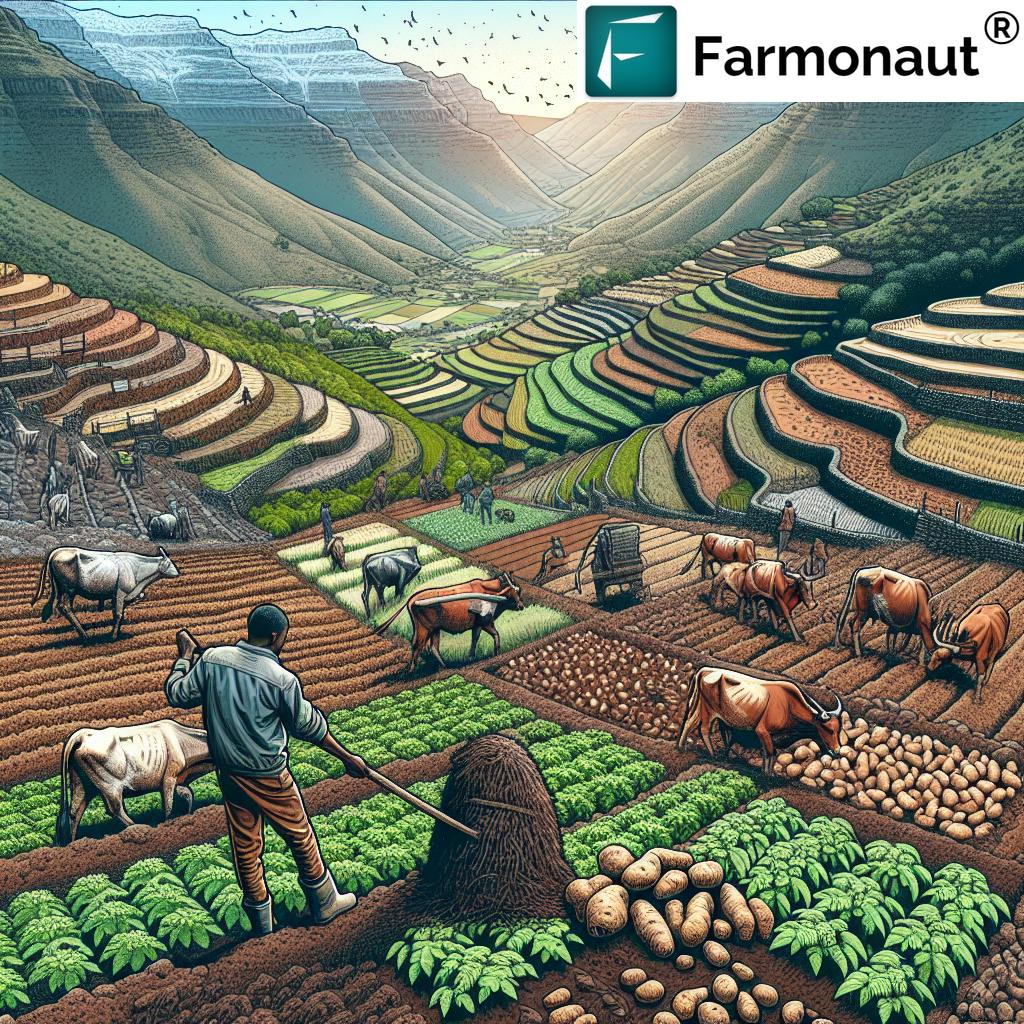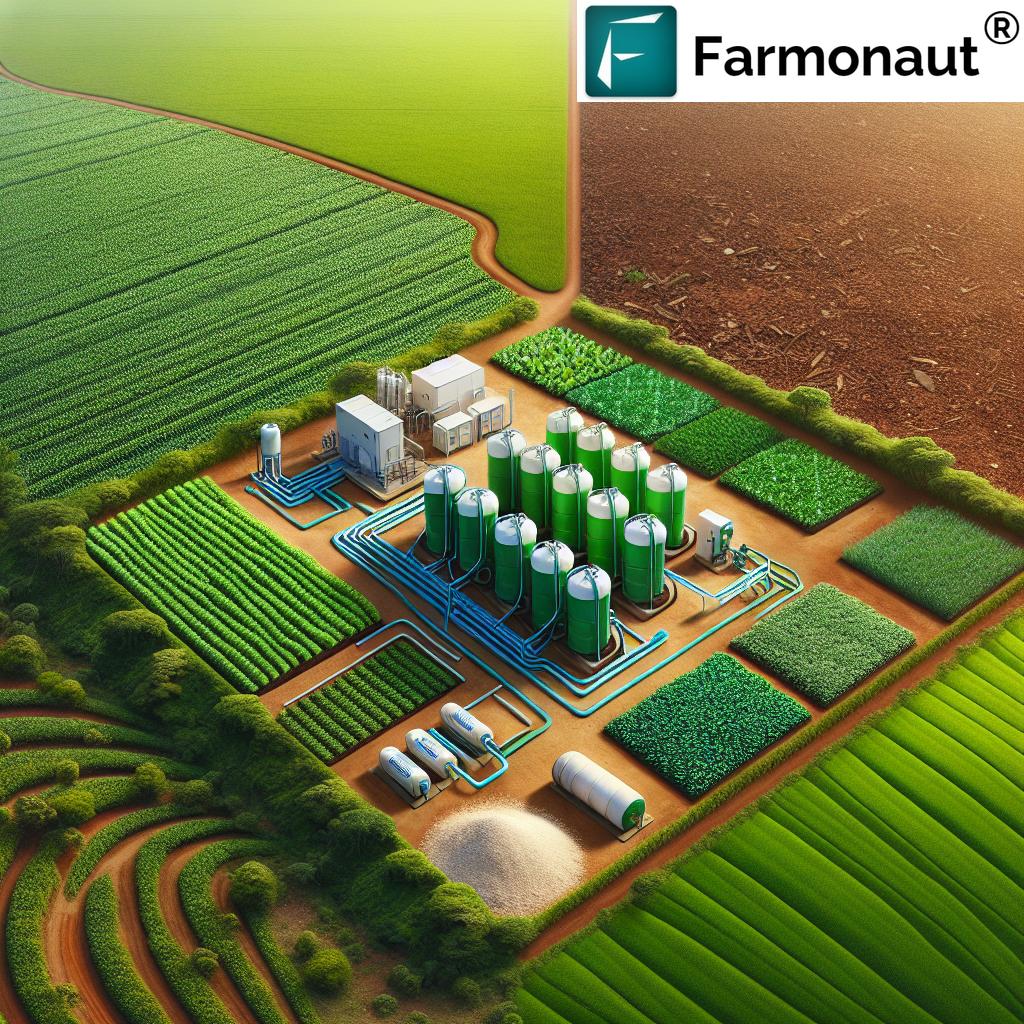Spinach Crop: 7 Proven Strategies for High Yield 2025
“Spinach yields in South Africa can reach up to 30 tons per hectare with optimal irrigation and nutrient management.”
Introduction: Spinach Crop Potential in South Africa
Spinach (Spinacia oleracea) ranks among the most valuable leafy greens in South Africa, with widespread cultivation across the Gauteng, Ekurhuleni, and Pretoria regions. Its fast growth, high returns, and adaptability to different soil and weather conditions make it an ideal crop for both small-scale and commercial farmers. Yet, extracting the maximum yield per acre—especially targeting 30 tons/hectare (12,000 kg/acre) under irrigated management—relies on a comprehensive understanding of local soil health, nutrient gaps, weed and pest pressures, and regionally adapted management strategies.
In this guide, we analyze the latest 2025 agricultural guidelines and research data to reveal 7 proven strategies to optimize spinach crop yield in South Africa for the upcoming seasons—emphasizing the unique growing conditions of Ekurhuleni, Pretoria and similar highveld environments. We’ll explore how soil analysis, targeted fertilizer application, precision irrigation, pest and disease protection, harvest timing, and satellite-powered technologies such as those by Farmonaut can help maximize profit and sustainability.
1. Soil Testing and Health Management: Foundation of High-Spinach Yield
Why Focus on Soil for Spinach Yield in South Africa?
Proper soil testing and tailored management are fundamental to achieve high spinach crop yields in South Africa, especially in Ekurhuleni and Pretoria. The current state of your soil—in terms of pH, organic carbon, and essential nutrient composition (N, P, K, S, Zn)—directly determines plant health, growth rate, and disease resistance.
- Spinach grows best in slightly acidic–neutral soils (pH 6.0–7.0). In 2025 regional reports, pH levels around 6.5 have shown optimal results for vegetable production—as seen in the latest DALRRD 2022 guidelines.
- Soil Organic Carbon (SOC) is critically important for yield. While the optimal SOC is between 3-6%, the actual current values in many local fields in Ekurhuleni have been as low as 0.13%—indicating severe deficiency (analysis, 2025).
- Salinity is generally low in local soils, but can increase due to over-fertilization or poor irrigation practices.
How to Improve Soil Health for Spinach?
- Conduct a detailed soil test every spinach crop cycle to determine the actual levels and gaps in N, P, K, S, and Zn.
- Increase Soil Organic Carbon: Apply organic amendments like compost and manure. Cover crops (green manures) and reduced tillage also boost SOC.
- Correct Soil pH: If pH is too low or high, adjust with agricultural lime (to increase pH) or gypsum (to lower pH in sodic conditions).
Key Tip: High-yielding spinach in irrigated fields generally requires well-drained, fertile soil with at least 4000–8000 kg/acre as a baseline yield in the region (DALRRD, 2022).
If you’re interested in satellite-powered soil health and crop monitoring, Farmonaut’s platform uses NDVI, NDWI, and SAVI indices to visualize vegetation density, assess stress, and generate actionable advisory for spinach crops.
Learn more on the Agro-Admin Large Scale Farm Management platform—facilitating organized monitoring for commercial vegetable growers in South Africa.
2. Optimised Sowing Periods and Rapid Growth Cycle for Spinach Crops
Choosing the Right Sowing Period in Ekurhuleni and Pretoria, South Africa
Spinach (Spinacia oleracea) is unique in its ability to be grown year-round in South Africa—especially with regular irrigation—but timing your sowing to avoid extreme heat (mid-summer) and frost (mid-winter) is crucial. According to DALRRD’s 2022 guidelines for vegetables:
- Optimal sowing periods: September–October, December–January, and March–April.
- In Ekurhuleni, a spinach crop sown in September-October is usually ready for harvest within 30–45 days (October–November), enabling up to 3 full crop cycles yearly with irrigated fields.
This rapid growth cycle is especially advantageous for constant market supply in Pretoria, Gauteng and surrounding regions. Short duration, high density vegetable systems also limit pest and disease buildup.
Example: A spinach crop sown on 9 February 2025 in Ekurhuleni is likely ready for commercial harvest by April-May, based on spinach maturity reports (ARC-Roodeplaat, 2021).
For those seeking environmental sustainability and enhanced soil health alongside productivity, consideration of carbon footprinting in your vegetable farming is important. Farmonaut’s carbon footprinting tools help South African growers benchmark, reduce, and monitor the impact of fertilizer and irrigation practices seasonally.
“Effective crop rotation reduces spinach pest infestations by approximately 40%, boosting disease resistance and soil health.”
3. Precision Irrigation: Boosting Spinach Production
Localized Irrigation Strategies for Spinach in South Africa
Spinach is highly sensitive to water stress during germination and active leaf expansion. Even minor water deficiencies can cause severe yield losses due to leaf wilting, reduced canopy density, and susceptibility to pests like aphids and spider mites.
- Sprinkler irrigation is the most widely used method for spinach production in Ekurhuleni, as outlined by the Water Research Commission (WRC) South Africa, 2022.
- Drip irrigation is increasingly popular, with the benefit of 30–35% water savings and significantly reducing leaf disease (downy mildew, fusarium wilt), due to minimal canopy wetting.
How Much Water Does Spinach Actually Need?
For spinach at peak growth (vegetative stage), local data suggest a daily evapotranspiration rate of 4.0 mm. Yet, over-irrigation can cause root rot or nutrient leaching. Monitor SAVI and NDWI values for stress:
- NDWI (Normalized Difference Water Index): Ranges from 0.1 (severe water stress) to 0.9 (well-watered). Target: 0.7–0.9 at peak canopy.
- SAVI: Use to confirm canopy health; low SAVI (<0.4) indicates sparse, stressed spinach requiring urgent irrigation review.
Crop Water Requirements Are Highest:
- During seedling establishment and early leaf expansion.
- Under hot, dry, or windy conditions (common in September–October sowings in Pretoria/Gauteng).
Tip: No irrigation is recommended post-harvest (as vegetation no longer actively absorbs water), but keep residual moisture if sequential planting is intended.
Maximize your irrigation precision in 2025 using satellite-driven advisory available on Farmonaut Apps to monitor NDWI values and get real-time alerts on when, and how much, to irrigate for leafy vegetable crops like spinach.
4. Nutrient Management: Chemical and Organic Solutions for Maximum Yield
Understanding Spinach Nutrient Demands: N, P, K, S, and Zn
The yield and health of spinach (Spinacia oleracea) is critically dependent on nitrogen (N), phosphorus (P), potassium (K), sulphur (S), and zinc (Zn). Deficiencies—even at moderate levels—result in sparse canopy cover, pale or yellowing leaves, and significantly reduced marketable harvest.
- Nitrogen (N): Drives leaf expansion and deep green canopy. Optimal range: 18.2–27.3 kg/acre (general spinach guidelines from FSSA, 2023, and ARC)
- Phosphorus (P): Supports root development, growth, and rapid crop cycle. Optimal: 22.8–36.4 kg/acre
- Potassium (K): Increases leaf area and resistance to disease. Optimal: 136.5–227.5 kg/acre
- Sulphur (S): Linked to protein synthesis and strong stems. Optimal: 9.1–18.2 kg/acre
- Zinc (Zn): Essential micronutrient; deficiency causes poor leaf color. Optimal: 0.9–2.7 kg/acre
Filling the Nutrient Gap: Local Fertilizer Recommendations (Ekurhuleni, Pretoria, 2025)
Analysis of actual soil composition in spinach fields (2025) frequently finds critical gaps:
- Nitrogen Actual: 13.7 kg/acre (below optimal)
- Phosphorus Actual: 16.4 kg/acre (below optimal)
- Potassium Actual: 91.0 kg/acre (below optimal)
- Sulphur Actual: 6.4 kg/acre (below optimal)
- Zinc Actual: 0.6 kg/acre (below optimal)
Recommended solutions to bridge this gap:
-
Chemical Fertilizers:
- N: Urea, Ammonium Nitrate, Calcium Ammonium Nitrate
- P: Superphosphate, Triple Superphosphate, Diammonium Phosphate
- K: Potassium Chloride, Potassium Sulphate, Potassium Nitrate
- S: Gypsum, Ammonium Sulphate, Potassium Sulphate
- Zn: Zinc Sulphate, Zinc Chelate
-
Organic Alternatives:
- N: Compost, Manure, Blood meal
- P: Bone meal, Rock Phosphate, Compost
- K: Wood Ash, Compost, Kelp meal
- S: Compost, Manure, Elemental Sulfur
- Zn: Compost, Manure, Zinc-rich plant residues
The ideal application rates depend on annual soil analysis, crop stage and field history. Always integrate both chemical and organic solutions for balanced short-term and long-term soil health improvements. Avoid over-application to limit potential salinity build-up and costly waste.
Want to automate fertilizer recommendations based on real-time crop data? Farmonaut’s API and developer platform allow integration of AI-driven nutrient advisory alongside NDVI/NDWI tracking for spinach crops.
Read more in our API Documentation here—for precision vegetable production solutions.
5. Weed Control and Canopy Management for Spinach
Weed Risks in South African Spinach Fields (2025)
Weed invasion is a significant yield-limiting factor—especially when canopy cover is sparse, or growth is slowed due to water stress or nutrient deficiency. In Ekurhuleni & Pretoria, the most common weeds include:
- Amaranthus spp. (Pigweed)
- Chenopodium album (Lamb’s-quarters)
- Portulaca oleracea (Purslane)
- Cyperus rotundus (Purple nutsedge)
When spinach canopy density is low (SAVI values less than 0.4), weeds rapidly establish, compete for water and nutrients, and may even act as hosts for important pests and diseases (e.g., aphids).
Spinach Weed Management: Recommended Solutions
- Hand weeding and hoeing (preferred in organic systems and for young crops).
- Selective herbicides (chemical methods) for broadleaf and grassy weed control in large-scale production; always apply according to crop growth stage and regional guidelines.
- Mulching with organic matter to suppress weeds, conserve moisture and enhance SOC (soil organic carbon).
- Crop rotation—rotating spinach with cereals or legumes reduces weed seedbanks and pest carryover.
Farmonaut employs satellite imagery & AI to help you map real weed hotspots in the field by detecting irregular SAVI/NDVI patterns, a critical solution for spinach production in 2025 and beyond.
6. Pest and Disease Protection for Healthy Spinach Crops
Identifying and Managing Major Risks
Local data indicates the highest yield losses for spinach in South Africa’s irrigated systems are due to insect pests and fungal diseases. Regional guides (Croplife, 2023; ARC Plant Protection, 2022) identify the following threats:
- Aphids—transmit viral diseases, cause leaf curling, sticky residue and stunt growth.
- Spider mites—lead to yellowing, decreased canopy density, and leaf drop.
- Leafminers and cutworms—damage young seedlings and reduce stand vigor.
-
Fungal diseases:
- Downy mildew (Peronospora farinosa f.sp. spinaciae)
- Fusarium wilt
- White rust
- Cercospora leaf spot
Risk factors: Dense canopies and overhead irrigation raise humidity, increasing disease risk. Conversely, sparse/weakened canopies (due to low nutrients, water stress, or bad timing) are highly susceptible to insect attack (as indicated by low SAVI/NDVI values and regionally observed outbreaks in 2025).
Recommended Pest & Disease Protection Program (2025)
- Monitor fields regularly for early signs of pests/diseases—including via satellite imagery (SAVI/NDVI analysis for stress spots).
-
Chemical Solutions:
Aphids: Insecticidal soap spray
Spider mites: Acaricide
Downy mildew: Mancozeb spray
Fusarium wilt: Soil fumigation (use sparingly!) -
Organic/Biological Control:
- Neem oil spray; predatory mites for spider mites
- Copper fungicides for mildew; crop rotation to limit disease buildup
- Remove diseased plants promptly to avoid spread
- Use disease/pest-resistant spinach varieties wherever available and suited to your region
- Practice effective crop sanitation and rotation (see mid-blog trivia above for yield boost and health benefits)
Satellite-enabled NDVI & SAVI mapping from Farmonaut helps identify early stress spots—often before visible crop symptoms appear—allowing targeted intervention in spinach fields.
7. Harvest Timing, Yield Estimation and Monitoring Technologies
Harvest Timing: When is Spinach Mature?
In South Africa, spinach typically matures within 30–45 days of sowing, depending on variety and growing conditions (ARC-Roodeplaat, 2021). Harvest or post-harvest stage is identified by fully-developed, dark-green leaves and dense canopy coverage (NDVI or SAVI >0.75).
- Multiple harvests per year are possible—especially when using intensive, well-managed irrigated fields.
- Optimal harvest periods in Ekurhuleni: October–November, January–February, April–May.
Yield Estimation Techniques: Regional and Technology-Driven
- Manual method: Use established sampling rates and Harvest/Canopy Cover Index for local conditions (typical yields: 4,000–8,000 kg/acre with optimal practices; record highs up to 12,000 kg/acre).
-
Remote Sensing/Satellite:
- NDVI and SAVI trends: Healthy spinach harvest windows: NDVI in 0.75–0.90, SAVI in 0.75–0.90.
- Significant drop in NDVI/SAVI indicates crop stress, disease, weed infestation, or depletion after harvest.
Automated yield forecasting tools using Farmonaut’s satellite platform empower farm managers and cooperatives to plan labor, logistics, sales, and inputs for the next season more accurately than ever.
Take crop monitoring to the next level! Click here to try the Farmonaut Web App, featuring AI-driven yield prediction and stress alerts, tailored for South African spinach farmers.
Spinach Yield Optimization Strategies Comparison Table
Frequently Asked Questions: Spinach Crop Yield & Management
What’s the average and optimal spinach yield per acre in South Africa?
Average irrigated yield: 4,000–8,000 kg/acre | Highest reported: Up to 12,000 kg/acre (30 t/ha), given optimal soil, water and pest management practices (ARC-Roodeplaat, 2021; DALRRD 2022).
Which are the best fertilizer sources for spinach in Ekurhuleni/Pretoria?
Chemically: Urea (N), Superphosphate (P), Potassium Chloride/Sulphate (K), Gypsum (S), Zinc Sulphate (Zn).
Organic: Compost, manure, bone meal, wood ash, kelp meal. Always apply based on soil analysis.
How do pests like aphids and spider mites affect spinach crops?
Aphids stunt leaf growth, transmit viruses, and encourage sooty mold. Spider mites cause leaf yellowing/drying. Early detection and IPM are crucial for healthy spinach production in South Africa.
Can I grow spinach year-round in South Africa?
Yes, with irrigation and by avoiding frost/heat extremes. Stagger sowing in September–October, January–February, March–April for maximum output.
What satellite indices are used to monitor spinach health?
NDVI, SAVI, and NDWI are used to map chlorophyll, canopy density, and water status. Farmonaut’s platform provides these insights for spinach fields.
How does crop rotation benefit spinach yield?
Well-planned crop rotation can reduce pest infestations by up to 40%, break disease cycles, and improve soil structure and health.
For spinach producers looking to export or participate in high-value supply chains, Farmonaut’s product traceability tool ensures robust blockchain-led tracking for food safety and compliance—a major requirement for South African vegetable exporters in 2025.
Manage harvest logistics, input delivery, and fleet optimization for your large-scale spinach production with the Farmonaut’s fleet management solution. Reduce costs, boost efficiency, and get integrated crop monitoring with one seamless dashboard.
Secure timely credit or insurance for your spinach enterprise: Farmonaut’s crop loan & insurance verification platform offers satellite-verified monitoring—helping you streamline applications, protect yield, and reduce risk.
Farmonaut Subscription Plans for Spinach Crop Monitoring
Ready for high-yield, resilient spinach crops in 2025?
Explore Farmonaut’s flexible subscription packages below. Track spinach crop health, predict risk, schedule irrigation, and receive actionable recommendations—all powered by advanced satellite insights, AI, and real-time weather data. Accessible on web, Android, and iOS.
Start your green revolution now:
Conclusion: South Africa’s Roadmap to Sustainable Spinach Success
From Ekurhuleni to Pretoria, spinach production continues to be a reliable, resilient, and profitable venture for South African farmers. As the competitive environment of 2025 demands superior yield and efficiency, relying on science-based, locally adapted, and tech-enabled strategies offers the surest path to success.
Combine soil health management, tailored irrigation, targeted nutrient applications, integrated pest/weed control, and real-time satellite monitoring (like that provided by Farmonaut) for best results.
Keep your focus on continuous improvement, sound recordkeeping, and timely crop cycle decisions, and you’ll harvest the rewards in spinach yields, market value, and sustainability.













